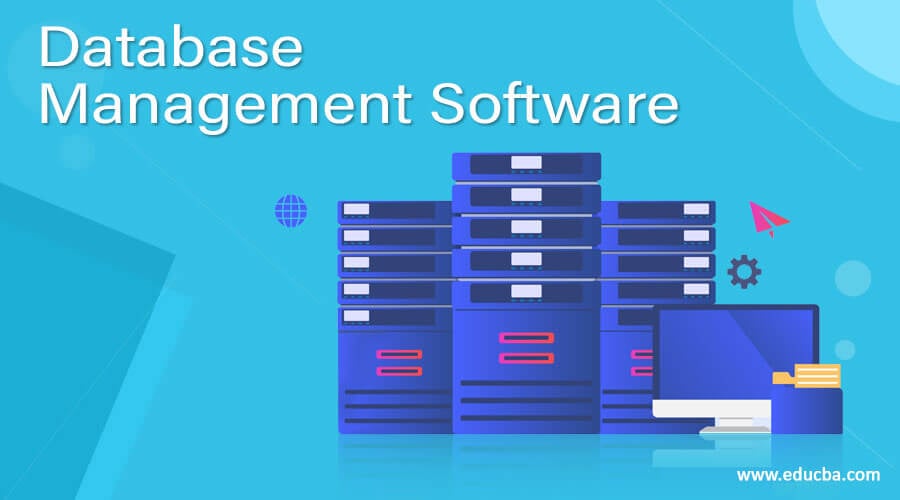Updated September 16, 2023
Introduction to Database Management Software
A database is a collection of related data which represents some aspect of the real world. A database management system is a system that is designed and built to manage these data. Database management system software is software used for storing and retrieving the user’s data. It accepts queries from the users and instructs the operating system to show specific data. It allows users to create their own database as per their requirements to store a large number of data and can retrieve the data easily. There are various software available to manage this data.
List of Database Management Software
Given below is the list mentioned:
1. Solarwinds Database Performance Analyzer
It is a database management software that is used to perform the SQL query operations, its performance, and monitoring. It supports cross-platform database performance tuning and optimization. This software has the features of machine learning, cross-platform database, clod database support, Automation management API, etc.
2. Oracle Relational Database Management System
Oracle is the most widely used relational database management software. It supports various operating systems like Windows, Linux, and UNIX. One of the features which makes it commercial software is that it is secure, and supports a large database. It also reduces the CPU time to proceed with the data, as a result, it gives the query response faster.
3. Altibase
It is an enterprise-grade, high-performance database management software. It is also known as a hybrid database as it delivers high-intensity data processing through the in-memory database portion and large storage capacity through the disk database portion. It is an open-source database that acts as a small subset of a relational database management system. It also provides scale-out technology.
4. IBM DB2
It is developed in 1983 using C, C++, and assembly language. It can store a huge amount of data upto pet bytes. It is very easy to access the database and retrieve the info. IBM BD2 supports multiple operating systems like Windows, Linux, and UNIX.
5. Teradata
It is a commercial database management software that supports operating system like Windows and Linux. It can process multiple queries at the same time. Mainly used for handling a large set of databases. The import and export of the data is easy with this tool. Data can easily be distributed.
6. ADABAS
It stands for an Adaptable database system that supports operating systems like Windows, Linux, and UNIX. The speed of data processing in this software is fast. Some of the features which make it commercial software is its flexible architecture and reliable transaction. It gives a reliable output with respect to the load of the data.
7. MySQL
It is one of the most used database management software which processes high-speed data. It supports the transaction queries like rollback and commits which helps to recover the data at the time of any transaction error. It supports operating systems like Windows and Linux. For MySQL, languages like C and C++ are used.
8. FileMaker
It is a commercial database management software that supports operating systems like Windows, Linux, UNIX, and MAC. It can be connected across various platforms such as information sharing becomes easy because of pf the cloud. Connection to SQL is also possible.
9. Informix Dynamic Servers
It is a commercial database management software used for the parallel processing of data. It supports operating systems like Windows, Linux, UNIX, and MAC. This software supports multicore and internet protocol. It is highly available and scalable, uses multi-threads.
10. MariaDB
It is a commercial database management software that is used to access the real-time database. It supports operating systems like Windows, Linux, UNIX, and MAC. It is highly available and scalable. Like Informix dynamic server it also supports the internet protocol and multithread
11. Cloudera
It is open-source database management used for accessing high-speed data. It provides great efficiency for large amounts of data. it also provides a high level of security.
12. Hadoop HDFS
It is commercial database management used for storing a large amount of data. As it used multiple machines to store the data, it is easy to access the data using Hadoop HDFS. It provides data redundancy and authentication feature to avoid data loss and to provide a high-security level. Parallel processing of the data is also possible.
13. Sequel Pro
This software is used for Mac database It is easy to use and work with MySQL databases. It makes the work smooth for the web applications using the sequel pro. It provides easy and flexible connectivity.
14. phpMyAdmin
It is a commercial database management software used to handle MySQL queries. It supports operating systems like Windows and Linux. PHP, XHTML, and js languages are used. It is user-friendly software, it can export the data in SQL, XML, and CSV files and it can be imported from both SQL and CSV files.
15. CouchDB
It is open-source software used for handling a large set of data. It supports operating systems like Windows and Linux. It provides a secure network system and an error-handling mechanism.
Conclusion
In this article we have seen what is Database Management Software along with its features, You can choose any of them based on your requirements.
Recommended Articles
This is a guide to Database Management Software. Here we discuss the introduction and list of database management software respectively. You may also have a look at the following articles to learn more –



